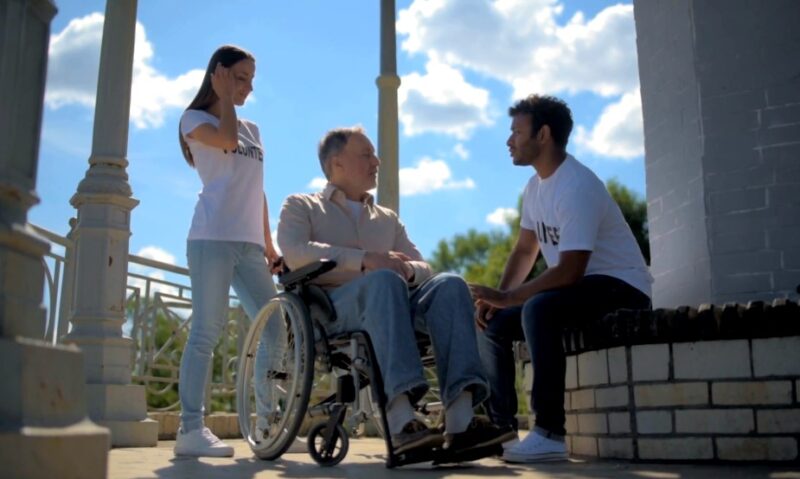Supported living is a term that many might have heard of, but few truly understand its depth and importance. In essence, it is a model of care that promotes independence, inclusivity, and dignity for individuals who require support to lead fulfilling lives.
This could range from individuals with physical disabilities, learning difficulties, or elderly individuals needing assistance with daily tasks. But there’s much more to it than just assistance. This blog post will delve deeper into this significant concept, exploring its meaning, benefits, features, challenges, and future prospects.
A Brief Overview
Supported living is about much more than just providing accommodation for people with disabilities or those who need care. It’s about fostering an environment where everyone can have the independence and choice to lead their own lives as fully as possible.
In essence, it is a philosophy. It’s built on the belief that every person, no matter their physical ability, cognitive function, or age, has the right to make choices about their own life. This includes where they live, who they live with, and how they spend their time.
The Core Principles of Supported Living

These principles are rooted in respect for individual autonomy and dignity. The aim is to provide support that is person-centered, promoting independence and facilitating participation in community life.
- Empowerment: The individual is encouraged to make their own decisions and express their preferences.
- Inclusion: The individual is supported to participate fully in their community.
- Choice: The individual chooses where and with whom they live.
- Respect: The individual’s dignity and rights are always upheld.
Origins and Evolution
This kind of living began in the 1980s as a reaction to the institutionalization of people with disabilities. It has since evolved and expanded to include various forms of support for different individuals.
The shift from institutional care to supported living was spurred by a growing recognition of the rights and capabilities of individuals with disabilities. Over time, it has evolved to include older people, those with mental health challenges, and individuals with complex needs, providing tailored support to each person.
Models

There are various models of supported living, each offering unique features tailored to the specific needs of individuals. These models are designed to accommodate the wide spectrum of needs and preferences that individuals may have.
Shared Living
Shared living, often referred to as “supported living services,” involves individuals with similar care needs living together. This model aims to foster a sense of community, reduce feelings of isolation, and allow for shared responsibilities.
Shared living is often preferred by individuals who enjoy social interactions and want to live in a communal setting. The support provided is usually comprehensive, encompassing daily tasks, personal care, and community participation.
Individual Supported Living

In contrast to shared living, individual variation enables an individual to live in their own home with tailored support. The amount and type of support provided can be adapted to suit the individual’s needs and preferences.
This model is often preferred by individuals who value their privacy and independence. The support provided ranges from help with daily tasks to emotional support and companionship.
Benefits of Supported Living
Supported living offers numerous benefits for individuals who need support. From fostering independence to enhancing the quality of life, the advantages of this model of care are significant.
Enhanced Independence
Supported living facilitates autonomy by enabling individuals to make their own decisions and lead their lives as they see fit. This contributes to an increased sense of self-worth and fulfillment.
- Confidence-building: By promoting independence, this way can help individuals build confidence in their abilities.
- Personal growth: Individuals have the opportunity to learn and grow through experiences they might not have encountered in a more restrictive environment.
Improved Quality of Life

In addition to promoting independence, supported living can significantly improve an individual’s quality of life.
- Social connections: Supported living promotes community inclusion, enabling individuals to build meaningful relationships.
- Health and well-being: Tailored support can help individuals maintain their health and well-being, managing any health conditions effectively.
Challenges
Like any other care model, supported living also comes with its share of challenges. Understanding these challenges can help in making informed decisions and formulating strategies to address them.
Securing Appropriate Housing
One of the main challenges in supported living is securing appropriate housing that is affordable, accessible, and well-located.
- Availability: There is often a shortage of suitable housing for supported living, particularly in urban areas.
- Cost: Affordable housing can be difficult to find, especially for those on a low income or receiving disability benefits.
Providing Consistent Quality Support
Another challenge is ensuring that the quality of support provided is consistent and meets the individual’s needs.
- Training: Support staff need to be well-trained and competent to provide the required support.
- Staff turnover: High staff turnover can lead to inconsistency in the support provided, which can be disruptive for the individual.
What Future Holds

Despite the challenges, the future of supported living looks promising. Advancements in technology and evolving social attitudes towards inclusivity are opening up new possibilities for improvements.
Technology and Supported Living
Technology is playing an increasingly important role in supported living. From assistive devices to digital platforms, technology is helping to enhance independence and improve the quality of support provided.
- Assistive technology: Devices such as home automation systems, GPS trackers, and health monitoring devices can enhance independence and safety.
- Digital platforms: Online platforms can facilitate communication, provide access to services, and foster community connections.
Promoting Inclusive Communities

As societal attitudes evolve, there is a growing recognition of the importance of promoting inclusive communities. This creates a more enabling environment for supported living.
- Changing attitudes: Societal attitudes towards disability and aging are gradually changing, with a growing recognition of the rights and capabilities of all individuals.
- Policy and legislation: Governments are increasingly prioritizing the promotion of inclusive communities, enacting policies and legislation that support this aim.
FAQ
How is Supported Living defined in the United States?
In the U.S., supported living is defined as persons with disabilities living where and with whom they want, for as long as they want, with the ongoing support needed to sustain that choice.
What types of services are involved in Supported Living?
Supportive living services can be provided by paid staff, including live-in roommates or boarders, paid neighbors, a person hired as an attendant, a support worker, or a personal assistant, as well as more traditional agency and (modified) shift(live-in) staffing. Professionals, friends, families, and other “informal supports” can also assist people to live in their homes.
What is the goal of Supported Living?
The goal of supported living is to provide more choices, more integrated and more regular homes, and apartments for people with the “most severe disabilities.” It aims to design services around the particular needs and wishes of individuals.
What is the concept of “homes of their own” in Supported Living?
The focus of supported living is on making people’s places into “homes of their own,” which means that individuals with disabilities have the right to live in their own homes and have personal support provided by another organization or by hiring a personal assistant.
How is Supported Living implemented in the United Kingdom?
In the UK, supported living is the term given by local authorities to encompass a range of services designed to help disabled citizens retain their independence in their local community. Mentally and physically disabled people can live in their own homes and have personal support provided by another organization or by hiring a personal assistant.
What are the housing, care, and support options in the UK?
The government in the UK expects local councils to give people with learning disabilities a genuine opportunity to choose between housing, care, and support options that include supportive living, small-scale ordinary housing, and village or intentional communities.
What is the role of locally supported living teams in the UK?
Local supported living teams can advise what supported housing is available in any given area. Other assistance may include a personal assistant or other care services, Direct Payments to pay for privately sourced care services, mobility equipment, home adaptations, security, emergency call center, and meals on wheels.
What are the principles of Supported Living?
The principles of living on this way include the separation of housing and support, home ownership and leasing, individualized and flexible supports, and individual choice. This program design requires service coordination/case management/service broker/support facilitator, individualized funding, and person-centered approaches to planning and support.
Final Words
Supported living is not just about providing care. It’s about fostering an environment where every individual has the chance to lead a fulfilling and meaningful life, regardless of their abilities or age. While there are challenges to overcome, the future of this kind of living is filled with potential. As we continue to innovate, learn, and grow, we can create a world where everyone is truly included and valued.






